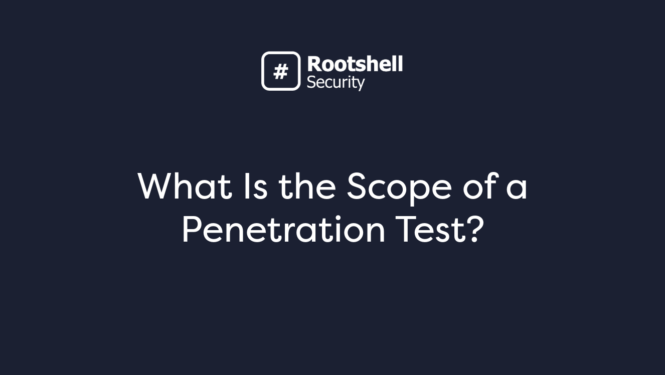Firewalls, antivirus software, and monitoring systems all have their place in protecting companies from cyber threats, but they can only go so far. The real question is: how do you know if those defenses will stand up when tested by a determined attacker?
This is where penetration testing comes in. Pentesting recreates the tactics of an attacker in a controlled way, revealing weaknesses before they are exploited. Tools are an important part of this process, allowing testers to scan, exploit, and report on vulnerabilities with precision.
In this guide, we will cover what penetration testing involves, the role of pentesting tools, the difference between manual and automated testing, and finally, the seven most widely recognized tools that every security professional should be aware of.
What is a Penetration Test?
A penetration test, or pentest, is a simulated cyber attack carried out on a computer system, application, or network to evaluate security. Unlike a simple vulnerability assessment, which only highlights possible flaws, a penetration test actively attempts to exploit those flaws to understand the real-world risks they pose.
Pentests can be conducted in many different ways depending on the objective:
- Black-box testing: The tester has no prior knowledge of the system and approaches it as an external attacker would.
- White-box testing: The tester has full visibility into the system, including architecture diagrams, source code, or credentials.
- Grey-box testing: The tester has partial knowledge, such as limited credentials or system information, giving a balance between realism and depth.
The findings of a penetration test are compiled into a report that explains which vulnerabilities were found, how they were exploited, and what potential damage could occur if a real attacker targeted them. This information helps organizations make informed decisions about where to strengthen their defenses.
What are Pentesting Tools?
Pentesting tools are software applications that help security professionals identify and exploit weaknesses during a penetration test. While human expertise is indispensable, these tools speed up the process by automating repetitive tasks, providing pre-built exploits, and simplifying the analysis of results.
These tools serve several purposes:
- Reconnaissance – Gathering information about a target, such as open ports, running services, or software versions.
- Vulnerability detection – Scanning systems for weaknesses like outdated software, misconfigurations, or coding flaws.
- Exploitation – Simulating attacks to see if vulnerabilities can be exploited and what level of access an attacker might gain.
- Reporting and analysis – Organizing findings into structured reports that highlight risks and potential mitigation steps.
Manual vs Automated Pentesting
When carrying out a penetration test, organizations can choose between manual and automated approaches.
Each penetration testing method has its strengths and limitations, and understanding the differences is important for selecting the right strategy. The table below compares manual and automated pentesting to highlight how they work and when each approach is most suitable.
Aspect | Manual Pentesting | Automated Pentesting |
Definition | Carried out by security experts who write custom scripts, study application logic, and use attack knowledge to find weaknesses. | Uses tools to scan systems at scale, running tests against networks, web applications, or databases to find vulnerabilities. |
Advantages | Can find complex vulnerabilities, including logic flaws, that automated tools may miss. | Faster for large environments, able to quickly find weaknesses. |
Limitations | Time-consuming and requires specialised expertise. | It can generate false positives and may overlook subtle or complex issues. |
Best Use | Adds depth and context to testing results. | Provides a broad overview of the system’s security posture. |
Combined Approach | Often used alongside automated tools for a thorough assessment. | Automated scans give a baseline, while manual testing fills in gaps and confirms findings. |
The best approach often combines both. Automated tools provide a broad overview, while manual testing brings depth and context to the results.
Types of Penetration Testing Tools
Pentesting tools can be grouped into several categories, each designed for a different aspect of security testing:
Network scanners – Identify live hosts, open ports, and running services.
Web application testers – Simulate attacks like SQL injection, cross-site scripting, and insecure session handling.
Password crackers – Attempt to break weak or reused passwords.
Wireless testing tools – Target Wi-Fi networks to identify encryption flaws or rogue access points.
Exploitation frameworks – Provide pre-built exploits and payloads for testing vulnerabilities.
Traffic analyzers – Capture and study network packets to detect insecure data transmission.
Reporting and management tools – Help document findings and present them in a structured way.
Each category brings a different perspective. For example, a password cracking tool might reveal weak user credentials, while a network scanner could expose unpatched services.
Top 7 Penetration Testing Tools
Penetration testing tools form the backbone of security assessments. Below are seven widely trusted tools, with details on how they work, their advantages, limitations, and when they’re most effective.
1. Nmap (Network Mapper)
Nmap is a network scanning utility that identifies devices, services, and open ports across an environment. It works by sending carefully crafted packets and analyzing responses to map a network’s structure.
Techniques include TCP SYN scans, UDP scans for less common services, and OS fingerprinting to determine the operating system behind a device. Security teams often integrate Nmap’s scripts and libraries to automate vulnerability detection and version checks.
Price: Free for standard use; OEM licenses required for redistribution.
Integrations: Works with Metasploit, Nessus, Wireshark, and scripting frameworks via Nmap Scripting Engine (NSE).
Pros:
- Free, lightweight, and flexible.
- Supports multiple scanning methods for stealth or thoroughness.
- Integrated with frameworks like Metasploit and Nessus.
- Nmap Scripting Engine automates tasks like vulnerability checks.
- Active community with extensive tutorials and support.
Cons:
- Large networks take time to scan.
- Firewalls/IDS may alter results or detect scans.
- Technical knowledge is needed to interpret results.
- Risk of false positives/negatives.
- Aggressive scans can trigger alarms.
2. Metasploit Framework
Metasploit is a penetration testing framework built around the concept of exploits (attack code targeting vulnerabilities) and payloads (what happens after successful exploitation). Testers choose a target, select an exploit from its vast open-source library, configure options, and execute to simulate an attack. It also includes auxiliary modules for tasks like scanning, brute-forcing, and post-exploitation activities.
Price: Metasploit offers a free open-source version for manual testing and a paid Pro edition with automation, reporting, and collaboration tools, typically priced around US$15k per year.
Integrations: It integrates with tools like Nmap and Nessus, with trial licenses available via Rapid7.
Pros:
- Extensive exploit and payload library.
- Integrates with tools like Nmap for reconnaissance.
- Supports automation and scripting for repeatable tests.
- Useful for training and professional testing.
Cons:
- Steep learning curve for beginners.
- Requires careful configuration to avoid unintended damage.
- Some features may be overwhelming without prior experience.
- It can be detected by intrusion prevention systems if not used carefully.
3. Burp Suite
Burp Suite is a professional-grade toolkit for web application penetration testing. Its proxy server intercepts traffic between a browser and a web app, letting testers analyze and modify requests in real time. It includes automated vulnerability scanning for issues like SQL injection and XSS, while also providing manual tools such as the Repeater, Intruder, and Decoder for more advanced testing. Paid versions unlock deeper automation and reporting features.
Price: Burp Suite offers a free Community edition, a Professional edition ($475 per user/year) with advanced manual and automated testing, and Enterprise/DAST plans for large-scale CI/CD integration (pricing on request).
Integrations: Burp Pro adds automation, reporting, and collaboration features, integrating seamlessly with other security tools.
Pros:
- Comprehensive web app security testing suite.
- Automates detection of XSS, SQL injection, and other flaws.
- Manual tools allow for in-depth testing of business logic vulnerabilities.
- Widely used in bug bounty programs and corporate testing.
Cons:
- Paid version required for advanced features.
- Automated scans may miss complex logic issues.
- Requires knowledge of web app architecture to maximize value.
- Can generate high volumes of data to analyze manually.
4. Wireshark
Wireshark is a packet capture and analysis tool that records network traffic at the packet level. It dissects packets into their components (protocols, headers, payloads) and allows testers to search, filter, and analyze traffic patterns. This makes it invaluable for detecting unencrypted communication, troubleshooting anomalies, or identifying malicious behavior hidden in network flows.
Price: Wireshark is a free, open-source tool used for packet capture and network traffic analysis. It helps identify unencrypted data, troubleshoot issues, and detect suspicious activity. Suitable for all skill levels.
Integrations: It integrates with major network protocols and runs on Windows, macOS, and Linux.
Pros:
- Free and open-source.
- Deep visibility into network protocols and packets.
- Supports multiple platforms and network types.
- Ideal for troubleshooting, threat detection, and forensic analysis.
Cons:
- Generates large volumes of data needing expert interpretation.
- Capturing traffic may require elevated privileges.
- Cannot prevent attacks; analysis is reactive.
- Real-time monitoring can be resource-intensive.
5. Aircrack-ng (Free/Open Source)
Aircrack-ng is a suite for auditing wireless networks. It captures wireless packets, encryption strength, and attempts to crack WEP/WPA keys through dictionary or brute force methods. It also supports monitoring for rogue access points, packet injection, and replay attacks. Its open-source codebase is regularly updated to support new Wi-Fi standards.
Price: Aircrack‑ng is free and open‑source. You should note that you may incur indirect costs for compatible wireless adapters or commercial support/GUI tools from third parties.
Integrations: Works with most network protocols and devices; compatible with Nmap and other traffic analysis tools.
Pros:
- Effective for testing Wi-Fi encryption and security.
- Detects rogue access points and weak passwords.
- Supports various attack modes for auditing wireless networks.
- Free and widely used in penetration testing.
Cons:
- Requires compatible wireless hardware.
- Limited effectiveness against WPA3.
- Setting it up correctly can be complex for beginners.
- May interfere with legitimate network traffic during testing.
6. John the Ripper
John the Ripper is a password-cracking tool designed to test the strength of passwords. It supports dictionary attacks (using wordlists), brute force (trying every possible combination), and hybrid attacks (combining patterns and rules). Its community-driven edition extends support for many modern hashing algorithms and can leverage GPUs for faster performance.
Price: John the Ripper is free in its community edition, with a paid Pro version ($40–$185) offering optimized builds, easier installation, and support for enterprise or commercial use.
Integrations: Works with GPU libraries, scripting tools, password auditing suites, and SIEM systems.
Pros:
- Supports a wide range of hashing algorithms.
- Combines dictionary and brute-force attacks efficiently.
- Useful for auditing password policies and corporate security hygiene.
- Highly customizable with wordlists and rules.
Cons:
- Time-consuming for complex passwords.
- Requires knowledge of attack strategies.
- Resource-intensive during large-scale password testing.
- May trigger account lockouts if not used carefully.
7. OWASP ZAP
OWASP ZAP is an open-source web application security scanner maintained by the OWASP community. It acts as a proxy to intercept and manipulate traffic while also offering automated scans for common web vulnerabilities such as SQL injection and cross-site scripting. It supports plugins and community-driven extensions that expand functionality for more complex test cases.
Price: OWASP ZAP is free, open‑source; any costs are indirect (paid plugins, CI/CD hosting, managed/security-as-a-service, or commercial support/training from third‑party vendors).
Integrations: CI/CD pipelines, Jenkins, Docker, Selenium, and other web testing frameworks.
Pros:
- Free and open-source.
- Supports automated and manual testing for flexibility.
- Extendable via plugins.
- Great for catching flaws during web app development.
Cons:
- It may not match commercial tools like Burp Suite in depth.
- Large-scale testing requires careful configuration.
- Some advanced features may be harder to use for beginners.
- Automated scans might miss complex business logic flaws.
Choosing the Right Tools
No single tool covers every area of penetration testing. A balanced approach often involves combining network scanners, exploitation frameworks, web application testers, and password cracking utilities. The choice depends on the scope of the test, the systems involved, and the goals of the assessment.
For example, a corporate network assessment might focus heavily on Nmap, Metasploit, and Wireshark, whereas a web application test would rely more on Burp Suite and OWASP ZAP.
Why Penetration Testing and the Right Tools Matter
Penetration testing is one of the most practical ways to assess the resilience of your organization’s defenses. Pentesting tools give professionals the means to scan, exploit, and analyze weaknesses across networks. The seven tools discussed in this article represent some of the most trusted names in the field. Each serves a different purpose, and when used together, they provide a thorough picture of security risks.
Adopting a proactive testing approach with the right tools is a practical step towards reducing exposure and building stronger defenses. To explore how these tools can be applied in practice, you can book a demo with Rootshell Security.
Frequently Asked Questions
Can’t find the answer to your question?
You can always Contact Our Team of experts for a chat!
What is a good MTTR benchmark?
It varies by industry, size, and infrastructure complexity. In cybersecurity, faster is always better, but benchmarks often range from a few hours to under 24 hours.
Does automation reduce MTTR?
Yes. Automation helps contain threats instantly and speeds up remediation steps. However, human expertise is still important in complex cases.
What happens if MTTR is too high?
Long MTTR increases the risk of prolonged downtime, larger data breaches, and higher recovery costs. It can also affect compliance with regulations like GDPR.
Is MTTR the same as downtime?
Not exactly. MTTR measures the average time to repair, while downtime is the total time a system is unavailable. MTTR is one metric used to understand and reduce downtime.
Can MTTR vary by incident type?
Yes. Some incidents are easier to diagnose and resolve, like minor software bugs, while others, such as complex system failures or multi-layered cybersecurity breaches, can take much longer.



